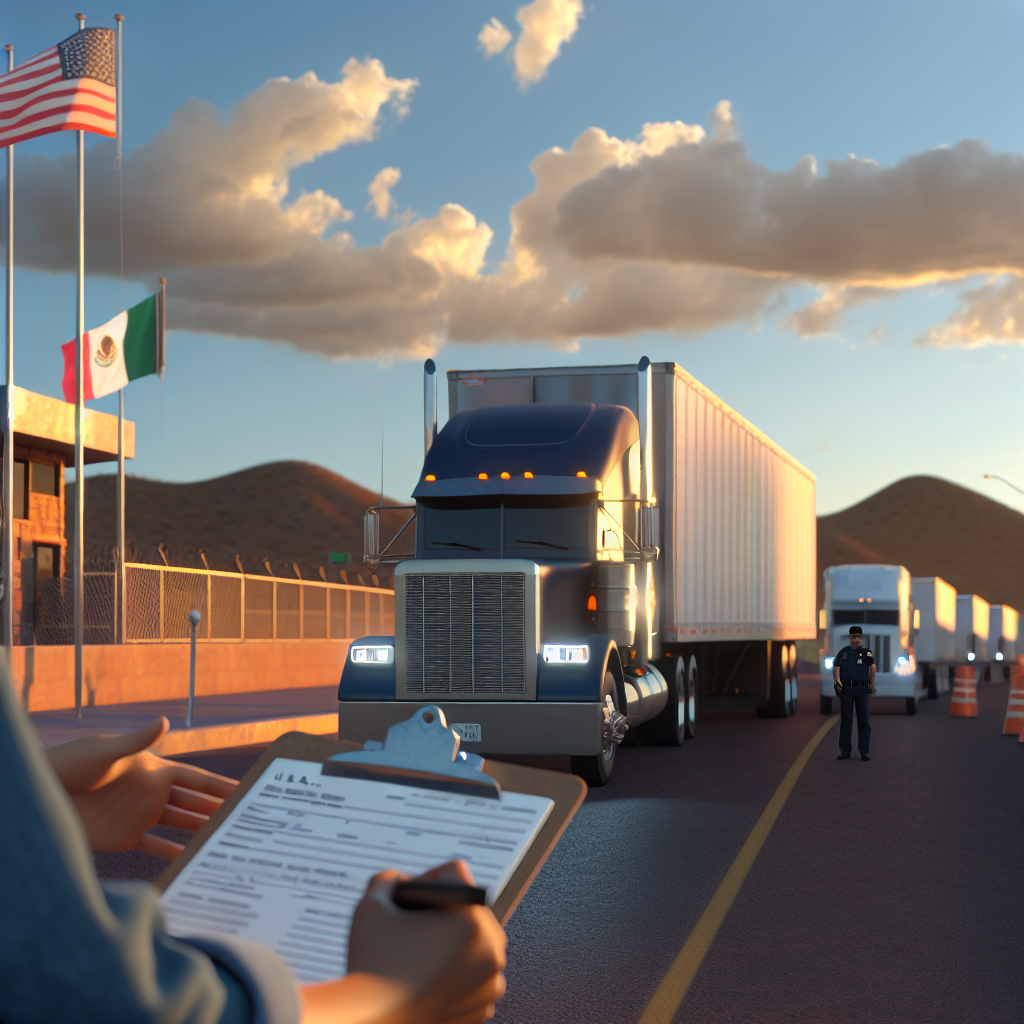Importers rushing to blunt tariff exposure are taking a fresh look at Mexico’s duty‑deferral and special customs regimes as the United States moves to levy a 25% duty on imported medium‑ and heavy‑duty trucks starting November 1 — with a 10% tariff on buses — and outlines how USMCA‑compliant vehicles could be taxed only on their non‑U.S. content. Those mechanics matter for fleets and shippers that depend on cross‑border truck supply, replacement units and parts flowing through border hubs like Laredo and El Paso.
Late Friday, the White House detailed a path for importers of USMCA‑qualifying trucks to document the value of U.S. content; once approved, the 25% duty would apply solely to the portion of the vehicle that is not U.S. content. The proclamation also defers the extra duty on many truck parts that qualify under USMCA until Commerce and CBP publish a methodology to tax only their non‑U.S. content, and it creates an offset worth up to 3.75% of a U.S.‑assembled truck’s retail value through 2030 to cushion the bite from costlier imported parts.
Industry read‑through over the weekend: most USMCA‑compliant heavy trucks will avoid a tariff on their U.S.‑made value, but importers must be able to prove content — and knock‑down kits remain squarely in scope. That’s how trucking‑focused outlets framed the new rules as companies began modeling duty exposure by bill of materials and lane.
For Mexico, a dominant export platform for heavy vehicles, the policy shift raises the stakes. The administration’s move is designed to shift more production state‑side, with analysts flagging potential ripple effects for North American supply chains that feed U.S. fleets. Multinationals are assessing whether more work should migrate into the U.S., or whether duty‑management in Mexico — via bonded, special‑regime facilities and tighter origin compliance — can keep total landed costs competitive.
At the same time, Mexico is tightening its own house. On Friday, Economy Secretary Marcelo Ebrard reiterated that authorities have been scrutinizing and, in some cases, suspending IMMEX authorizations for firms that misuse temporary import privileges — a reminder that any tariff‑relief strategy has to clear stricter Mexican compliance as well. That scrutiny is pushing some operators to re‑evaluate which customs regimes they use, and to harden audit trails around origin, value‑add and re‑export.
Why it matters to trucking: equipment availability, pricing and capital planning. The new 25% duty could raise sticker prices on imported tractors that don’t qualify under USMCA; even where the tariff applies only to non‑U.S. content, the cash‑flow impact will hinge on how quickly companies can certify content to Commerce’s satisfaction. Fleets counting on cross‑border deliveries should press OEMs and dealers now for documentation of U.S. content shares and contingency lead times, especially for November–December slots.
Paperwork becomes a lane of its own. The difference between paying 25% on a full vehicle versus on a slice of its value will be decided by origin proofs, costed bills of material and supplier affidavits. Expect more questions at the border as brokers reconcile USMCA qualification with the proclamation’s content test — and be prepared for further changes when Commerce and CBP publish the parts methodology in the Federal Register.
Costs are already piling up across industries. New and proposed U.S. tariffs this year have added tens of billions of dollars to company ledgers, with executives telling investors they’re bracing for more in 2025–26. That backdrop helps explain why interest in duty‑deferral tools on both sides of the border is rising as shippers try to manage landed costs without stalling freight.
What to watch next for cross‑border carriers and shippers:
– Implementation clock: the truck tariff takes effect at 12:01 a.m. EDT on November 1. Watch for Commerce/CBP guidance that will unlock how — and when — the parts methodology is applied.
– Contract language: build tariff‑adjustment clauses and content‑documentation obligations into purchase orders with OEMs and Tier 1s; align freight rates with possible price resets tied to content outcomes.
– Compliance posture in Mexico: if you rely on temporary import or bonded regimes there, validate that your process flow still matches program rules as enforcement ramps up; expect more frequent spot checks of re‑export and value‑added claims.
Bottom line for trucking: the near‑term winners will be the shippers and fleets that turn content verification and customs compliance into a core operating discipline — and that have a flexible cross‑border footprint, including duty‑management options in Mexico, to pivot as the rules harden.
Sources: FreightWaves, Reuters, Financial Times, The White House, Commercial Carrier Journal, Eje Central
This article was prepared exclusively for TruckStopInsider.com. Republishing is permitted only with proper credit and a link back to the original source.





